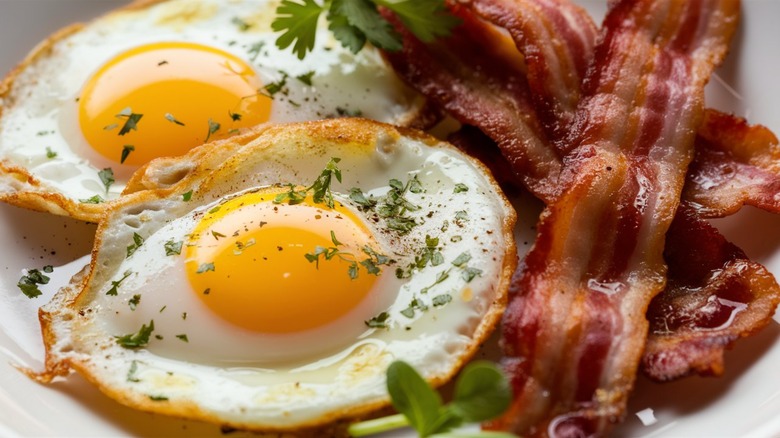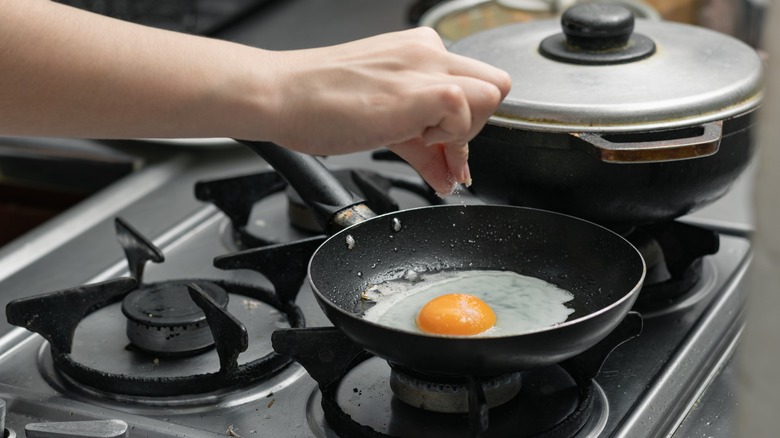For The Crispiest Fried Eggs, Baste Them In Oil
A perfectly fried, sunny-side-up egg is a thing of beauty, and yet it's one of those culinary cornerstones that can be difficult to get right. There are plenty of ways to fry an egg, but whichever method you choose, you still need to make sure the whites are cooked through and the yolk is still soft — preferably runny, for many of us. For some textural contrast, the eggs will ideally have some crisping action around the edges. You need all this to happen in just a few crucial minutes in the pan, which will be at a single temperature the whole time. This would be a much easier task if you were somehow able to cook the whites and yolks separately.
There is, however, a simple trick that can help you cook those whites to perfection while reducing your risk of overcooking the yolk. Simply baste the eggs as you would a turkey: While the egg is frying, tilt the pan slightly so that the oil in it pools on one side, then use a spoon to scoop up some of that hot oil and drizzle it over the egg whites, taking care not to let it touch the yolk. The whites should firm up and look a little puffy. When you're all done, you should have a pristinely golden yolk in the center of your pan, surrounded by a halo of tender egg white, fringed around the edges with lacy, crunchy fried bits. Here are a few other things to know.
What kind of oil to use — and other tips for frying eggs
Take your pick of fat to fry your eggs in, but be aware that butter, despite its delicious flavor, has a low smoke point that can cause it to burn if you use it for high-heat frying (if you've clarified your butter beforehand, though, go wild). For something neutral-tasting, go with canola oil. For something that adds a lot of extra flavor, there's always bacon fat.
Olive oil is a great compromise. It has a higher smoke point than butter, but it's also got a mildly grassy, Mediterranean taste. Even if your brunch guests might not be able to name your secret ingredient, they should be able to identify something slightly more nuanced going on with your eggs. Plus, olive oil is better for you than canola, and it's the egg-frying choice of chefs from José Andrés to Alison Roman.
Following the Spanish style, Andrés also uses 4 tablespoons of olive oil per egg — it's practically deep-fried. Here, you can keep things a little lighter. Heat a nonstick metal or cast iron pan over a medium-high flame, then pour in 1 or 2 tablespoons of oil. When it starts to shimmer but not smoke, crack your egg into it and season with salt and pepper. Let the edges set and start to brown (this should take about two to three minutes) before you proceed with the basting described above. Remove the pan from the heat as soon as the white stops looking runny.

